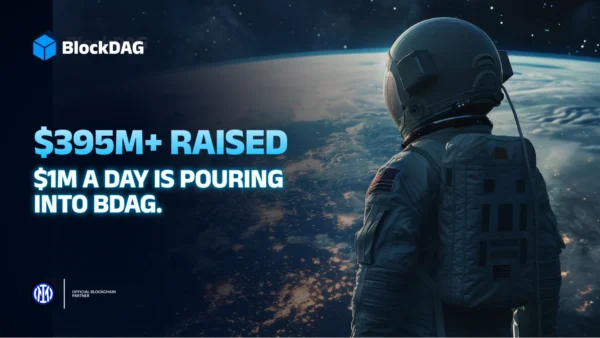
Once upon a time it was fairly simple to mine Bitcoin at home using a PC. All one had to do was download and install the relevant software to set up a node, switch it on and – boom! Soon you’d have enough Bitcoin to fund an extravagant lifestyle until your old age (at today’s prices anyway).
It’s said that when Satoshi Nakamoto first started mining BTC, he was earning 50 coins per hour. Unfortunately that’s no longer possible. As Bitcoin became more valuable and widely known, the difficulty of mining through its proof-of-work consensus algorithm became so great that a PC simply won’t do it any more. These days, the most successful Bitcoin mining operations stuff entire warehouses with powerful ASIC rigs to crunch the numbers and earn block rewards, and the average home miner and his little old PC can no longer compete.
Luckily, there are other ways to mine crypto at home, and it can still be a profitable venture. It’s just that you won’t be earning your rewards in BTC.
Monero
The world’s top privacy coin is popular because its transactions are anonymous by design, with both transaction addresses and values hidden from peering eyes. Even better, the Monero consensus mechanism has been specifically designed to resist the vast power of ASIC mining rigs, meaning that the average PC can still compete for rewards.
To start downloading Monero you’ll need a wallet such as the Monero GUI client. Once that’s setup, download the MultiMiner mining software, which is known for its ease of use.
Monero’s CryptoNote protocol utilizes a RandomX hash function to create complex mathematical problems that miners are tasked with solving. Miners can either go it alone as a solo operation or join a Monero mining pool, where their PCs resources will be combined with others to mine XMR. You’ll be required to pay a fee to join a pool, but doing so generally means more frequent payouts. Monero can be mined with either a CPU or GPU-powered PC, but bear in mind that GPUs are more efficient.
Spacemesh
Spacemesh’s much awaited, recently launched network, that’s specially designed for low-powered mining operations in order to ensure its network remains extremely decentralized. One of Bitcoin’s problems is that its network is actually quite centralized these days, with a small number of mining operations dominating and squeezing out smaller operators. While it’s still ‘decentralized’, many are worried that miners are gaining too much influence.
To ensure home PCs can compete, Spacemesh has created a Proof-of-Space Time consensus algorithm that uses storage resources as opposed to the CPU to mine crypto. It means a lot less energy is required to power the network, making it more environmentally friendly. At the same time, the “race-free” technique it employs makes it impossible for someone to hijack the network with powerful servers. Instead of competing against one another, all miners are rewarded at every EPOCH, no matter how many CPU resources they devote to mining. Instead, rewards are based on how much storage space the user is willing to commit. In this way the network favors smaller machines with a simple CPU and just just a few gigabytes of storage space.
To get started mining SMH tokens with Spacemesh, download the Smapp application here. It’s available for Windows, Mac OS and Linux, ensuring everyone can participate.
Zcash
Another popular privacy coin, Zcash is best known as the pioneer of ZK-Snarks, a cryptographic technique that can prove transactions occurred without revealing any information about them. Zcash employs an Equihas algorithm that’s ASIC-resistant, making it ideal for home miners with a GPU.
To get started, users must download the software required to run the Zcash blockchain on their machine, then set up a wallet that supports ZEC to collect the rewards. Because Zcash has been around since 2016, its blockchain is fairly hefty and can take a few hours to download. You’ll also need to download the appropriate drivers for your GPU. While it is possible to use a CPU-based machine, it’s unlikely to be powerful enough to earn any meaningful rewards.
As with Monero, users can mine solo or join a pool. To go it alone you’ll need to download the EWBF Zcash Miner software, while joining a pool is easier. If you join a pool, you’ll be able to shield your ZEC earnings with a shielded coin base that enhances privacy and allows them to be transferred to your wallet instantly.
The great thing about Zcash is that the ZEC token is widely accepted at numerous exchange platforms, including many of the big ones like Binance, Bitfinex and Huobi Global
Ravencoin
Founded in 2018 as a Bitcoin fork, Ravecoin claims to improve on the world’s number one crypto with its Full Asset Aware Protocol Level System. With this, it’s possible for anyone to issue, transfer, and track crypto assets.
Ravencoin also operates a one-minute block reward time and tweaks the weighted distribution schedule, while adding capabilities for the development of digital assets such as NFTs.
It’s simple to start mining Ravecoin. Simply download a Ravencoin wallet and any mining software that supports the KAWPOW script, which is another ASIC-proof mining algorithm that ensures consumer-grade PCs can compete and earn RVN rewards.
Users can mine RVN with either a GPU or a CPU, and there are also mining pool options available. The RVN token isn’t quite so widely known, but both Binance and OKex both support it.
MetatimeCoin
Another relatively new cryptocurrency that supports home mining is MetatimeCoin (MTC), the native token of the Metatime blockchain project.
Metatime’s MetaChain network utilizes a novel Hybrid Mining System and Meta AntHill technology that involves three kinds of miners and three different consensus mechanisms, enabling it to accommodate different classes of miners. MetaMiners use the Meta Proof-of-Stake algorithm, while MacroMiners must run the Meta Proof-of-Hash consensus mechanism and MicroMiners the Meta Proof-of-Social Work.
To become a MetaMiner and confirm and archive transactions, you’ll need a fairly powerful server or ASIC rig and have to pay a fee to run a node and also stake a specified number of MTC. The best option for home miners is to become a MacroMiner, charged with expanding the decentralized and distributed structure of MetaChain, checking signatures and backing up the blockchain. Such tasks can be performed with a regular consumer PC and will earn MTC rewards.
Alternatively, it’s possible to use a smartphone or tablet to become a MicroMiner, or mobile node that facilitates “social contributions” to the MetaChain network. MicroMiners help with managing the Metatime ecosystem and also partake in the protocol’s governance. The only thing that’s required to join is to download the Metatime mobile application and activate the MicroMiner feature from within it, and your device will automatically start earning small amounts of MTC.









